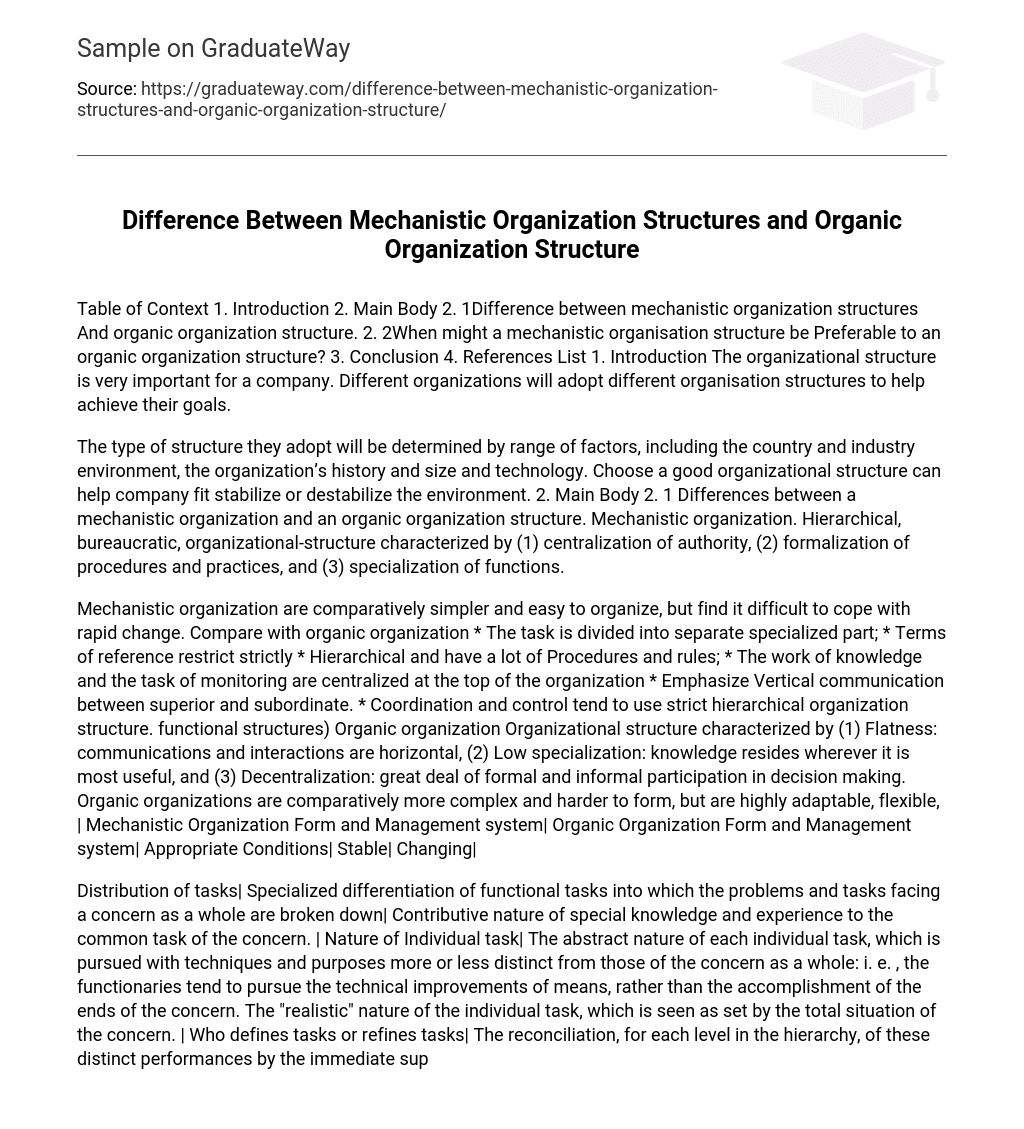Introduction
The selection of an organizational structure is vital for a company as it directly affects its goal achievement. This decision is influenced by factors like the country and industry environment, the organization’s history, size, and technology. Choosing an appropriate organizational structure can assist in adapting to and stabilizing or destabilizing the environment.
Main Body
The text distinguishes between a mechanistic organization structure and an organic organization structure. A mechanistic organization structure is hierarchical, bureaucratic, and characterized by centralization of authority, formalization of procedures and practices, and specialization of functions.
Organizational structure characterized by
- Flatness: communications and interactions are horizontal,
- Low specialization: knowledge resides wherever it is most useful,
- Decentralization: great deal of formal and informal participation in decision making.
The individual tasks pursued within an organization are abstract in nature, each with their own unique techniques and purposes. These tasks typically focus on improving the means rather than accomplishing the overall goals of the organization. Additionally, these tasks are viewed as realistic and influenced by the total situation of the organization.
Large organizations often require a high level of accountability for achieving results. They possess numerous products and plans, as well as a need for dependable suppliers and cost-effective labor. Therefore, they necessitate an organization that excels in organizing functions. Occasionally, there are crucial tasks that must be completed prior to the deadline or undergo performance evaluations. A mechanistic organizational structure can facilitate the establishment of a successful functional organization, enabling the company to reap benefits. When the external environment remains stable, which encompasses aspects such as the community, regional economy, taxation, and politics.
Due to the stable environment in a mechanistic organization structure company, tasks and problems do not change much. Each task is stable and easy to control as they are solved through formalized and standardized processes. The reconciliation of these distinct performances is done by the immediate superiors at each level in the hierarchy. These superiors are responsible for ensuring that each performance is relevant to their own special part of the main task. As there are not many extra steps and processes in this type of structure, efficiency is improved.
The internal environment is stable and allows companies to operate independently. The tasks are clear and consistent, and decisions can be made in a specific order. Employees follow rules and deliver high-quality goods and services. McDonald’s is an example of this type of organization, as all its locations adhere to a standard uniform, storefront design, menu, and employee pay structure. This mechanistic structure enables every employee to address customer issues.
Conclusion
In summary, mechanistic and organic organizational structures both offer advantages and are important for organizations. The specific organization chosen by a company may vary depending on the environment.
Reference
- http://www. businessdictionary. com/definition/mechanistic-organization. html
- http://www. businessdictionary. com/definition/organic-organization.
- html http://www. 12manage. com/methods_burns_mechanistic_organic_systems. html





